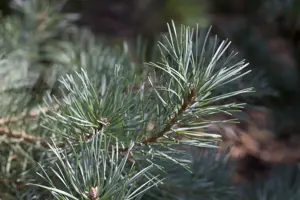Lonicera pericl. 'Caprilia Imperial' - 150-175 CM C5 Caned
Lonicera pericl. 'Caprilia Imperial' - 150-175 CM C5 Caned
Description
These produce red, round fruits from August. They exude a strong fragrance.
Bulletpoints
* Fruit jewellery
* the flowers are heavily favoured by bees, bumblebees and hoverflies
* strongly scented flowers
* easy to care for
* tolerates shade
Growth habit
Common honeysuckle 'CAPRILIA® Imperial' is climbing in habit. Rapidly growing.
Water
The plant needs plenty of water. Do not allow the soil to dry out.
Location
Preferred location in a sunny to semi-shady position.
Soil
Normal soil.
Planting time
Container plants can be planted all year round, except when the soil is frozen and in summer heat (over 30°C).
Tasks
- Mulching: In the period from March to April.
Care
- A slow-release fertiliser can be used in spring. This releases the nutrients slowly and continuously so that the plant is evenly supplied over a longer period of time.
- This plant should only be watered with lime-free water. Rainwater is particularly suitable for this purpose.
- Cut back frozen shoots to the healthy wood as soon as there is no longer any danger of frost.
- Nets, rods or trellises - many materials are suitable as climbing aids for delicate climbing plants. However, it is important that the main shoots of the plants are securely attached.
Flower
The two-coloured, tubular flowers appear in whorls from May to July. They grow to around 4 - 5 cm and are strongly scented.
fruit
The red, round fruits of Lonicera periclymenum 'CAPRILIA® Imperial' are particularly decorative. These appear from August.
Interesting facts
Lonicera periclymenum 'CAPRILIA® Imperial' is slightly poisonous.
Use
Façade, privacy screen, bee pasture, bird food plant, small/front garden
Root
Lonicera periclymenum 'CAPRILIA® Imperial' is a heartroot.
- Article number139
-
EAN codeLOPCIMPE-2150175C5ST
- Latin nameLonicera pericl. 'Caprilia Imperial'
- catalogLandscape shop


